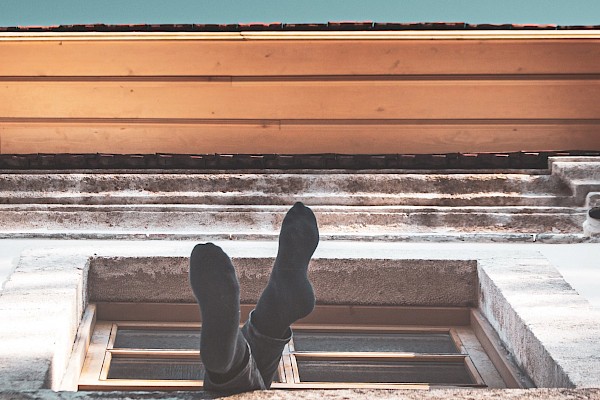Power naps
The night becomes history with your last yawn on your way into the office, at the latest. If you’re going to work, you need to leave fatigue behind, because you need to be clear-headed and wide awake so you can be productive and efficient in the workplace. At least, this is how the economic system seems to see it in the western world.
Concepts like rest and relaxation rarely find space in our performance-oriented thinking. The dominant philosophy in the workplace is that rest and relaxation are clearly things to do in your free time, apart from the mandatory work breaks.
Unlike the economic system, science says that we need rest and relaxation to be effective, not just outside the nine-to-five.
“Sleep is to people what winding up is to a clock.”
– Arthur Schopenhauer –
Rest and relaxation have many faces, but the most important is sleep. In addition to sleeping at night, a quick forty winks or power nap, as it is also called, is attracting more and more attention.
“inemuri” or what we can learn from China and Japan
Although other countries have known for millennia that naps are beneficial, in western nations, including Switzerland, a rest period in the workplace is still seen as wasting time or laziness. For example, the right to a nap has been enshrined in the Chinese constitution since 1949. In Japan, napping is ideologically acceptable in the world of work, and is even highly recommended in some companies. The term “inemuri” is used for this, which literally means something like “sleeping while present”.
What is it like at your workplace? Is taking a nap now and then to recharge your energy looked on favourably? Or is withdrawing for 20 minutes to lie down and relax more of a taboo?
Power napping requires courage
For many Swiss citizens, sleeping during working hours is unthinkable. Although we are all familiar with the dip in concentration right after lunch, only a few of us listen to the body’s need for rest and relaxation and lie down for 20 to 30 minutes. People who withdraw to take a nap are considered passive, lazy and unproductive at our latitude. It’s clear that taking a power nap in the modern workplace requires courage. If science is right, the economic system urgently needs to be re-thought regarding rest and relaxation, because 20 minutes of rest demonstrably improve our concentration on our work.
A short nap has a big impact
To boost wakefulness after lunch, stimulate creativity and improve performance on complex tasks, all you need to do is take a midday nap, says current research. However, the value of the rest depends on both the timing of the nap and its duration.
Meta-analyses state that an afternoon nap improves all sorts of cognitive performance. It has a particularly positive effect on performance in tasks requiring logical thinking, reaction time and symbol recognition. Furthermore, a power nap also seems to affect all types of memory (procedural, declarative and short-term).
A daytime nap also brings further advantages such as relaxation, reduced fatigue and a better mood. Studies also indicate that a power nap can even boost creativity as well as productivity and physical performance.
This sounds highly promising. Have you ever wondered how long these effects will last for? Not all scientists agree on this matter. According to one of the most recent meta-analyses, the benefits of a power nap appear predominantly 30 minutes to two hours after waking up. No major effects are apparent during the 30 minutes after a nap, probably due to drowsiness directly after waking up. Maybe you already know that you can’t make any great leaps directly after waking up, even if you have only slept for 30 minutes. So give yourself some run-up time after your power nap and don’t expect a performance boost as soon as you wake up. Your body needs time to get back up to speed, so pay attention and see whether your performance peaks in the 30 minutes to 2 hours after your nap.
Keep it brief
Maybe you have also heard that a power nap should not last longer than 30 minutes. This is supported by current literature, which states that brief naps are more beneficial to cognitive performance than power naps longer than 30 minutes. A possible explanation is that longer sleep phases (> 30 minutes) result in drowsiness, meaning that the benefits of your nap are only noticeable later. Drowsiness reflects the transfer from the sleep state to wakefulness and is characterised by a reduction in thinking and performance ability directly after waking up. This phase between sleeping and waking is a state of fatigue, confusion and reduced stimulation. The longer the sleep phase, the drowsier you feel. To avoid feeling so drowsy, your nap needs to be short (20-30 minutes) and should not take place at the end of a circadian phase. Moreover, if a daytime power nap is too long, it can impair the quality of your sleep at night.
How does power napping actually work?
We now know that a power nap should last for no longer than 20 to 30 minutes and should be taken after lunch or early afternoon in the best-case scenario. In order to take full advantage of this brief downtime, it is important to fall asleep rapidly and pleasantly. This is something you have to learn, as is getting up in the right way after your nap. Find out how that works here.
References:
Dutheil, F., Danini, B., Bagheri, R., Fantini, M. L., Pereira, B., Moustafa, F., Trousselard, M., & Navel, V. (2021). Effects of a Short Daytime Nap on the Cognitive Performance: A Systematic Review and Meta-Analysis. International journal of environmental research and public health, 18(19), 10212.
Faraut, B., Andrillon, T., Vecchierini, M.-F. & Leger, D. (2017). Napping: A Public Health Issue. From Epidemiological to Laboratory Studies. Sleep Med. Rev., 35, 85–100.
Lau, H., Tucker, M.A. & Fishbein, W. (2010). Daytime Napping: Effects on Human Direct Associative and Relational Memory. Neurobiol. Learn Mem. 93, 554–560.
Webb, W. & Dinges, D. Cultural perspectives on napping and the siesta. In Sleep and Alertness: Chronobiological, Behavioral and Medical Aspects of Napping; Raven Press: New York, NY, USA, 1989; pp. 247–265.
 subscribe to newsletter
subscribe to newsletter


